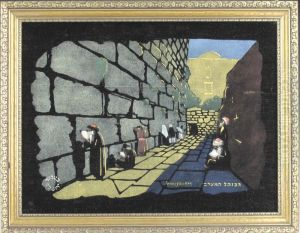Bezalel Paintings
Bezalel is not a conventional artist in the typical sense but rather a biblical figure mentioned in the context of the construction of the Tabernacle in the Hebrew Bible. According to the Book of Exodus, Bezalel, son of Uri, son of Hur, of the tribe of Judah, was appointed by God to lead the construction of the Tabernacle and its sacred artifacts. His name means 'in the shadow (protection) of God'.
Bezalel is described as being highly skilled and endowed with divine wisdom and understanding. He was specifically gifted in workmanship to design artistic works in gold, silver, bronze, cutting jewels for setting, carving wood, and to perform all types of artistic tasks. As the chief artisan of the Tabernacle, he would have been responsible not only for the technical aspects of construction but also for the aesthetic representation and symbolic significance of the structure and its contents.
The account of Bezalel's work is found primarily in Exodus 31:1-11 and Exodus 35:30-35, where his role is detailed by God's command to Moses. He was assisted by Oholiab and other gifted artisans. The Tabernacle, also known as the Tent of Meeting, was the portable earthly dwelling place of God among the Israelites as they wandered the desert and until the building of the Temple in Jerusalem.
Bezalel's legacy extends beyond his biblical narrative. He is often considered as one of the first named artists in history and has served as an archetype for the artist as a divinely inspired creator. His story has influenced Jewish and Christian thoughts on art and craftsmanship, and his name has been used for various artistic and cultural institutions, such as the Bezalel Academy of Arts and Design in Jerusalem, established in 1906, which is Israel's national school of art.
Given the nature of historical and religious texts, the specific dates of Bezalel's birth and death are not documented, and there is no verifiable historical evidence about his life outside the biblical texts. Therefore, his biography is largely a reflection of religious tradition rather than a historical record in the modern sense.
